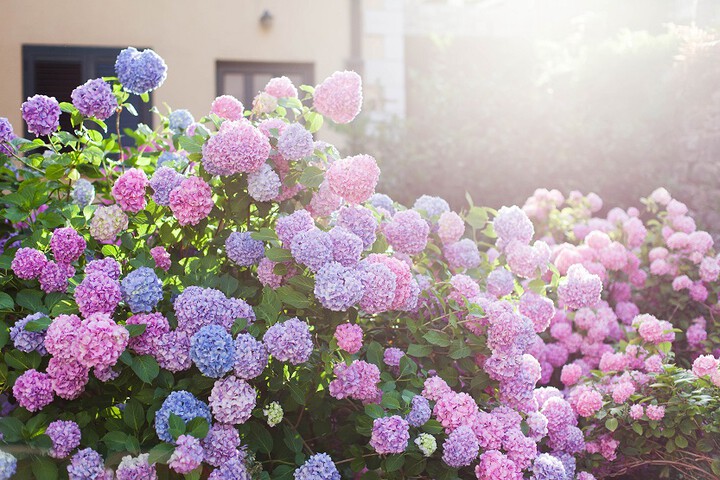From the best options for hot climates to easy-to-care for species, we'll help you find the right variety for your space.
If you're a fan of colorful flowers with big, beautiful blooms, then chances are you've thought about growing hydrangeas in your garden. However, as with any other plant, successful cultivation begins with picking the right kind of hydrangea for your unique outdoor space. "One of the most common mistakes people make with hydrangeas is choosing the wrong species for their growing conditions," explains garden expert Melinda Myers. "Growing the bigleaf hydrangeas in a colder climate will not produce the same results as those in southern gardens."

Along with climate conditions, Myers says some gardeners also have a tendency to overlook the necessary soil and lighting requirements for certain hydrangeas. "Soil with a high pH level naturally promotes pink flowers," she explains. "So trying to grow blue hydrangeas in alkaline soil will make your job a lot harder." Not sure what type of hydrangea to grow in your backyard? We asked Meyers to break down the best hydrangea for every type of garden, and here's what she had to say.
Related: How to Plant Hydrangeas
For Hot Climates
If you're lucky enough to live in an area with a warmer climate, such as the South, Myers says your best bet is to plant Hydrangea macrophylla, or bigleaf hydrangea. "The large blue or pink flowers that cover the plant are the envy of northern gardeners," she says. "These bloom on old wood—but new repeat bloomers flower on old and new wood, extending the bloom time in the South and providing some flowers in colder regions."
For Cooler Climates
If you reside in a part of the country with cooler temperatures, Myers says you'll want to choose hydrangeas that can withstand cold weather extremes. "Panicle hydrangea, also known as Hydrangea paniculate, is very cold hardy, and reliably comes back even after brutal zone 3 winters," she says. "They're very adaptable and low-maintenance, and often offer large, lacy white flowers that fade to pink or purple before brown."
For Full Sun
If you don't have a lot of shaded areas in your garden, which most hydrangeas prefer, Myers once again suggests choosing a panicle hydrangea. "They prefer full sun, require minimal care, and are drought-tolerant once their roots have established," she explains. She also says other types of hydrangeas can tolerate full sun as long as they receive sufficient moisture, which may mean watering them daily.
For Shade
Also known as smooth hydrangea, Annabelle hydrangeas really thrive in shade (or partially shaded) conditions, notes Myers. "Annabelle types are the flowers many of us think about when we think hydrangeas in the shade," she explains. "They are adapted to partial shade and often used in shady gardens with other shade tolerant plants, as a shady border, or surrounding a porch or deck."
Low-Maintenance Options
Along with cold-hardy panicle hydrangeas, Myers says to grow Annabelle hydrangeas if you're a rookie gardener. "Annabelle types have been around a long time for a reason," she says. "With proper pruning, the older stems help to support new growth." She also recommends bigleaf hydrangeas for inexperienced southern gardeners, since they thrive in warm conditions and can grow up to 15 feet tall.